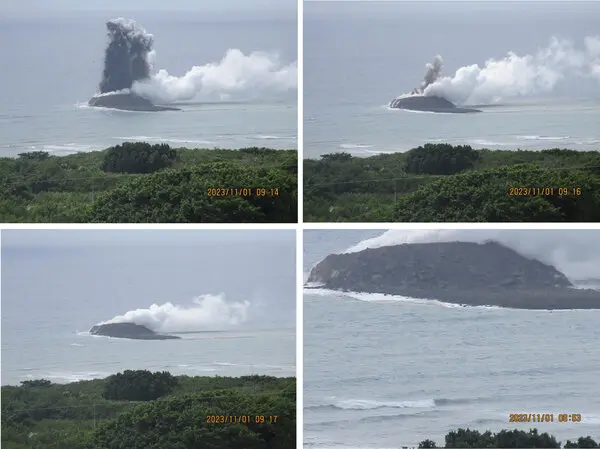Japan’s geographical narrative has been enriched once again with the emergence of a new island, adding to its already extensive archipelago. This natural phenomenon, a result of an underwater volcanic eruption near the Ogasawara island chain, occurred in late October 2023. The eruption led to the formation of a new island, roughly 100 meters in diameter, through a process known as phreatomagmatic eruptions. These eruptions, characterized by the interaction of magma with seawater, produce explosive releases of ash and steam, creating new landmasses in the process.
The phenomenon started near Iwoto Island, an area steeped in historical significance due to its role in World War II, and known historically as Iwo Jima. The island’s formation process was marked by a series of eruptions that lasted for about ten days, leading to the accumulation of volcanic material above the sea level.
Unveiling the Geological Marvel

The formation of this new island is a testament to the dynamic and ever-changing nature of Earth’s geology. Associate Professor Fukashi Maeno from Tokyo University’s Earthquake Research Institute has been closely monitoring the situation. He reported that during the peak of the eruptions, towering plumes of smoke and ash were observed, reaching heights of over 50 meters. These frequent eruptions every few minutes signified a significant magmatic event in the region.
The Ogasawara island chain, also known as the Bonin Islands, is no stranger to such geological events. Comprising over 30 islands, some of which are still volcanically active, this chain has seen similar instances in the past. The most recent one prior to this was in 2013, where another island was formed through similar volcanic activities.
Future Prospects and Scientific Significance
The longevity and future morphology of this newly formed island are subjects of scientific curiosity. While the island currently consists of delicate volcanic rocks vulnerable to erosion by ocean waves and currents, its permanence could be ensured if it undergoes further volcanic transformations, like being covered by more resilient lava flows.
This event presents an invaluable opportunity for scientists to study the mechanisms of island formation and volcanic activity. Moreover, it underscores the importance of continuous monitoring of volcanic islands for understanding Earth’s geological processes and for potential implications on maritime navigation and environmental ecosystems.
[Call to Action] Follow our blog for more updates on this and other fascinating geological phenomena. Share your insights or questions about this extraordinary event in the comments section below. We’re excited to hear your thoughts on this captivating development in Earth’s geology!



